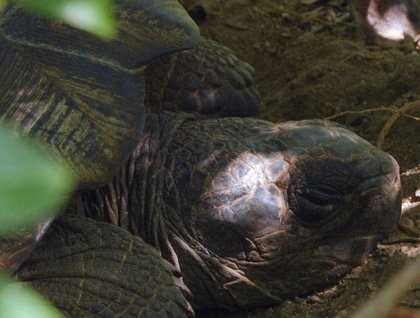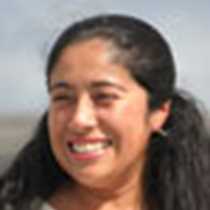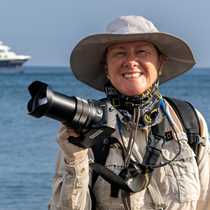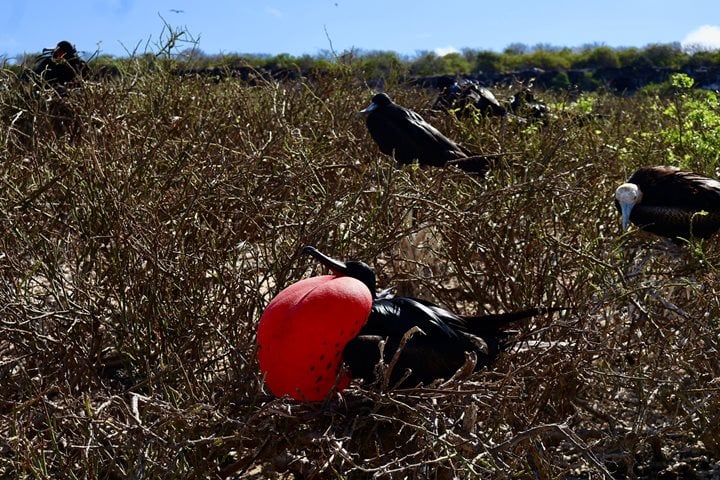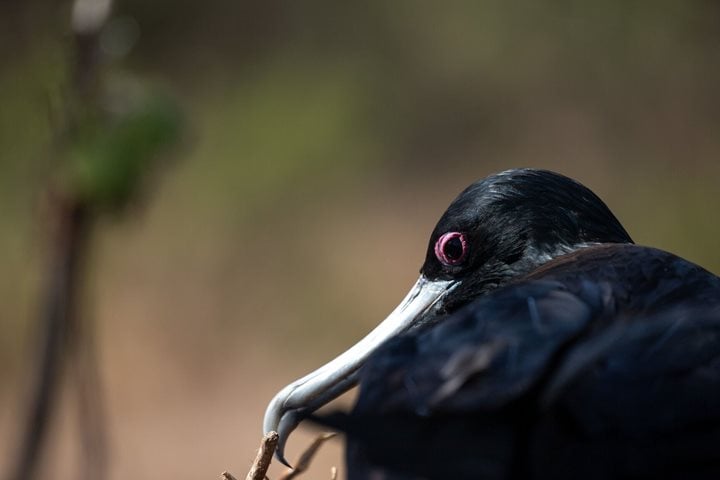Today we awoke at Urbina Bay to a sunny day with clear blue skies. Urbina Bay is a very significant geological area, because a vast area was uplifted three to four meters prior to volcanic activity at Alcedo Volcano, as pressure was building in the internal volcanic plumbing. This event was so strong that many species of invertebrates were stranded inland, and the coastal environment changed dramatically. As we were approaching to the shore, big waves were breaking on the beach, and our sailors had to make use of all their abilities and confidence, as timing is crucial for a safe landing. A long and a short hike were offered this morning; I was with one of the groups on a short hike. We headed inland through the forest of poison apple trees, yellow cordia and Galapagos cotton bushes. There were lots of Darwin finches and Galapagos mocking birds to be seen, and the songs of the yellow warblers accompanied us throughout the hike. Numerous land iguanas were seen along the trail, males following females, bright yellow-headed males showing off, and others just looking for a good, shady area. To our amazement, we also came upon a young Alcedo giant tortoise, feeding on the new vegetation. It was an incredible morning, but the equatorial sun was out and it was getting too hot, so we went for a quick dip in the ocean. The water was very agreeable and refreshing.
Our captain, Fausto Hinojosa, lifted anchor as soon as all of our guests were back on board, and we headed off towards our afternoon destination: Tagus Cove. During our navigation, a very interesting lecture was held on board by John Geiger, Chief Executive Officer of the Royal Canadian Geographical Society. The lecture was called “In terror and in Hell: The historic 2014 discovery of explorer Sir John Franklin’s HMS Erebus off the Canada’s Arctic coast.”
After a delicious Ecuadorian lunch, there was time for a short siesta. In the protected bay of Tagus Cove, kayaking was offered as well as deep water snorkeling. This place is known for flightless Cormorants, Galapagos penguins, brown pelicans, swallow tailed gulls, marine iguanas, pacific green sea turtles, Galapagos sea lions. After these activities, there was time for an invigorating hike to the top rim of Darwin Lake. Here we got to see the oldest graffiti in the archipelago, dating back to 1836, just a few months after Darwin’s visit to this same site. The view from the top was breathtaking; we could clearly see the northern volcanoes of Isabela, the lava flows that brought them together and the natural barriers that make it so difficult for many species to cross.
We headed back as the last sun beams began to dip below the horizon. It was another great outing, and another great day in paradise!

